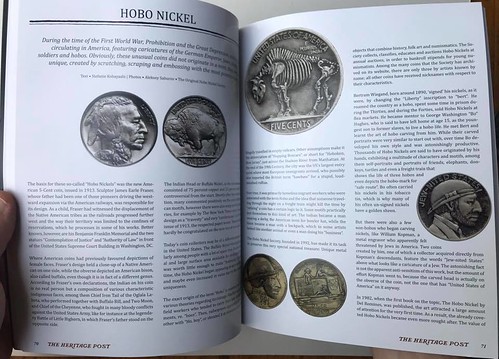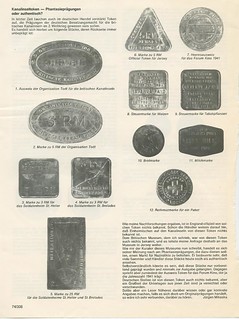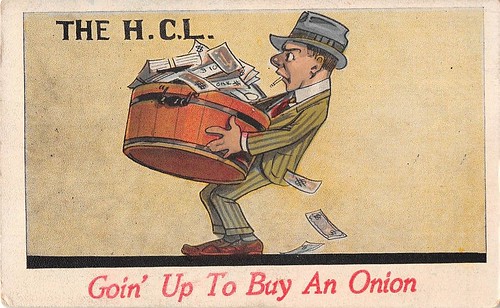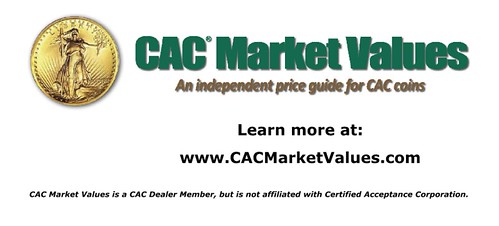
PREV ARTICLE
NEXT ARTICLE
FULL ISSUE
PREV FULL ISSUE
NOTES FROM E-SYLUM READERS: OCTOBER 14, 2018More on Testoons and Shillings David Hoover writes: I am pretty sure Mr. Davisson knows as much about testoons as those who wrote in to say he was wrong about the first shillings. After all, just because another coin had the same value in pence does not mean it was the same coin. I am thinking that when testoons existed the name shilling did not so I would have to say he is technically correct. I have always thought it was wrong myself when people would say that they are the same. There are an awful lot of coins of the same value with different names. I know that is not what the Royal Mint says, but how can something be something else that doesn’t exist yet? Allan Davisson writes: “The gold sovereign, the silver crown and the shilling piece were all Tudor innovations…” (Challis. The Tudor Coinage. P. 211) Were I to rewrite the piece, I would say “formally began” rather than simply “began” under Edward VI. However, the point remains that there was no currency piece known as a “shilling” before the Edward VI reform. Strictly speaking, the term is much older than the Tudors. It was a monetary measure used in Saxon times. It was not until Edward VI’s reign that the term was applied to a currency coin. The testoon of Henry VII was based on the Italian term testone, a European denomination. The Henry VII piece “never became more than a token or trial issue…” (Challis) It was struck to a standard of 144 grains. The testoon of Henry VIII was a debased issue and the demonetization of 1548 (Edward VI’s reign) converted them to groats. (Challis) The actual shilling as we know it began at a 96 grain standard under Edward VI and after some small fluctuation essentially settled at 92 ¾ grains. Eventually, in the milled series, it ended up at 87 grains. Thanks, everyone! -Editor To read the earlier E-Sylum articles, see: Non-Buyer's Remorse “THE FINEST WORK ON GREEK COINS EVER PRINTED” Dennis Kroh was almost certainly correct (as he was in many of his opinions) when he described Kraay and Hirmer’s magnificent “Greek Coins” thus. When I read Bill Daehn’s article about his acquisition of a (too?) reasonably-priced copy of this lovely volume in the Summer, 2018 issue of The Asylum I was reminded of my time at Spinks, London. In the mid-1970’s Thames and Hudson, the original publishers of the book offered Spinks in London the remaining stock of the book - some 250 copies…… It had been published at £6.6. (six guineas, or £6.30 in today’s money) – for, probably, a ridiculously low “remainder” price. At the time Spink had published a significant number of books, reprinted several standard works, and I had purchased quite a few large libraries, so we were somewhat stretched. In 1966 we had purchased a large quantity of this wonderful book, and sold most, but still had stock in our warehouse…..After consideration, Howard Linecar and I declined the offer. Thames and Hudson Ltd, sold these remaining copies to Harry Abrams Inc. of New York, who printed their own jackets, overprinted the title page with their name, and marketed the book in the US as their own publication. After a couple of years, they still had a large number left, and they offered those to us. We took them, and we repriced the book - at £10. It sold slowly….….and then, in due course it went out-of-print, and the price started to escalate…. until, in more recent years mint copies have been sold for $750 or more. A reasonably nice example can still be had for $450 or less. The moral is, buy the book when you can get it for the published price, don’t wait until it is reduced in price, as it may never be reduced in price, but it might just go out of print and the price may well escalate, as most really good books often tend to do, especially in our area of interest. I have seen it happen so often. How true! It has for years been my daydream to chance across a bookstore with a pile of these for sale at $10 apiece. It would be a nice way to finance a vacation after getting past my wife's you-are-not-going-to-buy-another-damn-book speech. -Editor German Magazine Features Hobo Nickels In a recent post on the OHNS Facebook page, Aleksey Saburov noted discovering an article about Hobo Nickels in the 27th. issue of the German publication "Magazin fur Herrenkultur". Google translates that to "Magazine for Men's Culture". Nice. Carol provided these images. Thanks. The English edition is called The Heritage Post. -Editor  Withrow Defacing U.S. Currency It was in 1999 or 2000 when Ms. Withrow came to an ANA to sign autographs. I had just started stamping Viking ships on my currency (To commemorate the Viking's discovery of America 2,000 years prior.) so I thought I'd ask her to sign one. When I placed it in front of her, she saw the ship stamp and asked, "Did you do this?" I replied, "Yes, Ma'am, I did." She responded, "You know we frown on people defacing U. S. currency." I smiled and said, "You mean like signing their name to currency with a permanent ink pen? She paused, looked up, then smiled and said, "I gotcha.", and signed it. I'll bet Ms. Withrow has autographed more currency than ANY other government official! Cool story. Thanks! -Editor To read the earlier E-Sylum article, see: More on the Fantasy Channel Islands Tokens You were looking for a Numismatics International Bulletin article on these. Perhaps this is a reference to a letter I had published in the January, 1980 issue asking for information on them. I received numerous responses, none citing an earlier article, though something could have been published subsequently. I received numerous responses. Someone sent me a typed copy of letters which appeared in the November and December, 1972 issues of Seaby's Bulletin, which may be the earliest published reference to the series. The more interesting response was from Richard Mayne, "(President, C.I. Occupation Society; Vice-President, Société Jersiase; author of 'Jersey Occupied' pub. by Jarrold's 1970)," who pronounced them clearly spurious. Jürgen Mikeska of Friedrichsdorf, Germany gave a similar opinion in his article from Geldgeschichtliche Nachrichten #74 (date?) which included photos of 12 different uniface pieces. He had contacted numerous parties in Britain and Germany who knew nothing of them, and included a 1979 letter from R. W. Higginbottom, curator of the museum of the Société Jersiase, who pronounced them "recent forgeries. . . since 1960 . ." Some pages torn from an undated price list which offers numerous Nazi pins, badges, medals, etc. at too-cheap prices, only some items designated "replicas," suggest that they were made by someone whose specialty was fake Nazi memorabilia. Mikeska pictured twelve different in the series, and neither the unattributed sales catalog nor my own records show any additional types, so that may be the extent of the series. Scott provided the following images. Thank you! -Editor   To read the earlier E-Sylum article, see: High Cost of Living Postcard   Carol Bastable writes: In reference to the 5 billion mark, this is a postcard I picked up on eBay within the last month. I enjoy collecting various types of numismatic ephemera and had found this one unusual as numismatic postcards go. As you will see, there is a reference to inflation with the high cost of an onion. In my high school history class I remember learning about people taking shopping carts full of money to the grocery store to buy food in post WWI Germany. German money was printed at will to pay off war debts and lost pretty much all its value as a result. When I bought this, I felt the card illustrated that history lesson very well. However I am not certain this is actually a reference to Germany or just a satirical general statement. The money is designed to be generic and could represent almost any country. The H.C.L. stands for the high cost of living. The card is not postmarked but the reference to island possessions, Cuba Canada, and Mexico might give a lead as to date. The very early 1900's cards just reference postage for domestic with one cent and foreign with 2 cents. The added locales on this card may support a different and later time period. Interesting. Thanks! -Editor To read the earlier E-Sylum article, see:  Wayne Homren, Editor The Numismatic Bibliomania Society is a non-profit organization promoting numismatic literature. See our web site at coinbooks.org. To submit items for publication in The E-Sylum, write to the Editor at this address: whomren@gmail.com To subscribe go to: https://my.binhost.com/lists/listinfo/esylum All Rights Reserved. NBS Home Page Contact the NBS webmaster 
|